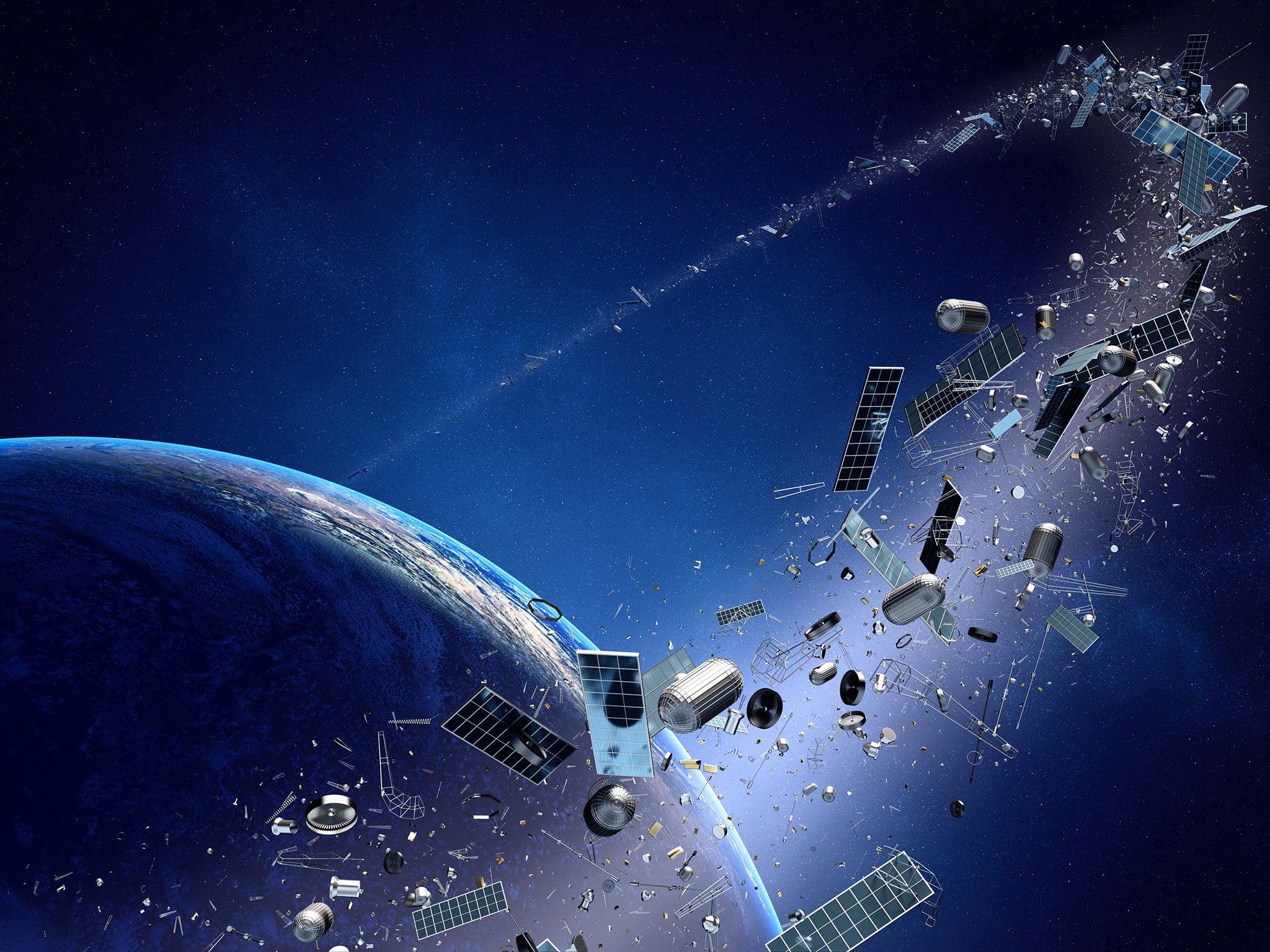Human space junk will stop us from finding aliens, experts warn
Some 400,000 satellites have been approved globally for low Earth orbit

Your support helps us to tell the story
From reproductive rights to climate change to Big Tech, The Independent is on the ground when the story is developing. Whether it's investigating the financials of Elon Musk's pro-Trump PAC or producing our latest documentary, 'The A Word', which shines a light on the American women fighting for reproductive rights, we know how important it is to parse out the facts from the messaging.
At such a critical moment in US history, we need reporters on the ground. Your donation allows us to keep sending journalists to speak to both sides of the story.
The Independent is trusted by Americans across the entire political spectrum. And unlike many other quality news outlets, we choose not to lock Americans out of our reporting and analysis with paywalls. We believe quality journalism should be available to everyone, paid for by those who can afford it.
Your support makes all the difference.The night sky will be “crawling” with satellites by the end of the decade, blocking out stars and leaving astronomers unable to make observations or detect alien life, experts have warmed.
More than 8,000 satellites are orbiting the Earth, a four-fold increase since 2019, with numbers expected to increase dramatically.
Some 400,000 satellites have been approved globally for low Earth orbit, with SpaceX alone set to launch another 44,000 for its Starlink internet constellation.
Astronomers are struggling to deal with bright streaks of light created by satellites drifting in front of the optical field of telescopes. Internet satellites can also interfere with sensitive radio telescopes.
Tony Tyson, professor of physics and astronomy at the University of California, said: “If you just went out in a dark place somewhere and looked at the sky in 2030 it would be a very macabre scene. The sky will be crawling with moving satellites and the number of stars that you would see are minimum, even in a very dark sky. It’s a major issue.”
The Royal Astronomical Society (RAS), the UK Space Agency and the Department for Business are so concerned they convened a Dark and Quiet Skies conference last week to call for regulation.
Robert Massey, deputy executive director of the RAS, said the world was seeing “a paradigm shift” in the use of space.
“There is the real prospect that we could see hundreds of thousands of satellites in orbit by the end of the decade,” he said.
“Frankly, searching for the origin of life may be a long shot but detecting signals from other civilizations becomes harder if you have an incredibly powerful and noisy sky.
“Unlike light pollution you cannot get away from it, because wherever you are on Earth you can see the sky.
“If we leave this unchecked, I think this is also a cultural issue. If you get to the point where satellites make up about 10 per cent of the stars in the sky moving around, I think that’s fairly intrusive, and it is a damage to that natural landscape.”
The Vera Rubin telescope, located in the $473 million Vera C. Rubin observatory on the Cerro Pachón ridge in north-central Chile, is already facing major issues from satellites.
The telescope, which begins a ten-year survey next year, looks for tiny changes in the movements of 37 billion stars and galaxies. Yet early testing has shown around 40 per cent of frames will be impacted during twilight hours.
Telescopes in space are facing additional difficulties with images from the Hubble often ruined by over-saturation as reflective satellites go past.
Experts warn that the influx of satellites would not only damage astronomy but could also change the night sky forever. Scientists are also concerned about the sheer numbers of deorbiting satellites.
Ken MacLeod, an independent expert in what happens to satellites after they stop being functional, has calculated that when all the internet constellations are operational there will be around 16,000 decaying internet satellites at any one time that will need to come out of orbit.
“They will cause re-entry fireballs,” he said. “If we really believe the numbers of how many are going to be falling, that’s about 60 every day and that’s much brighter than magnitude 7 (the faintest starlight visible with the naked eye) so they can cause troubles with all those observations.”
Join our commenting forum
Join thought-provoking conversations, follow other Independent readers and see their replies
Comments